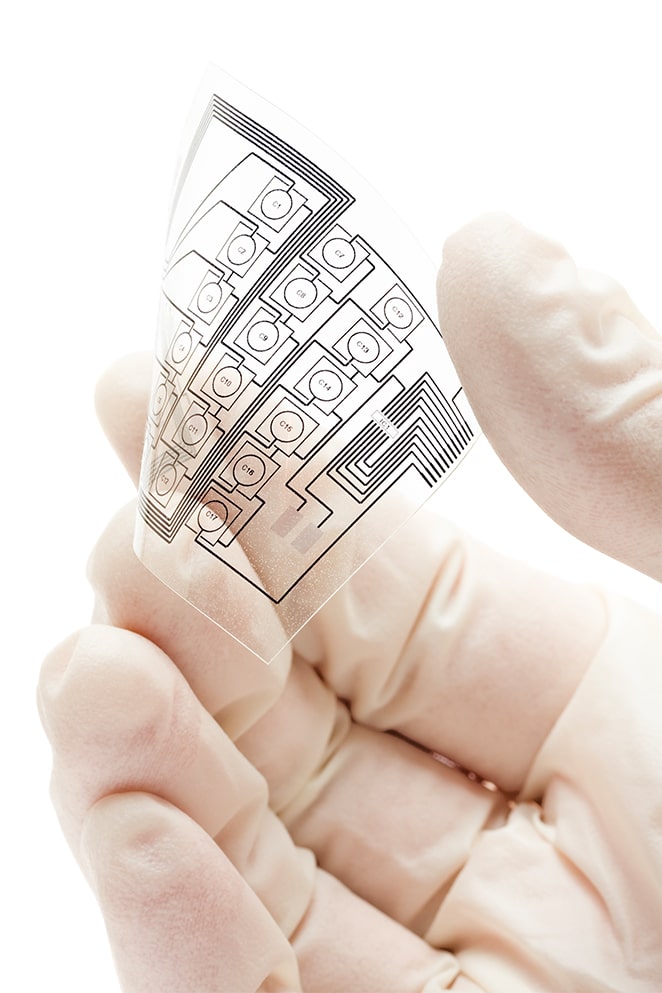The majority of applications that incorporate printed electronics are getting thinner in dimension and form factor. SmartInk conductive inks solutions open a new path for highly flexible electronic circuits and reduced dimensions for connected objects by removing technical road blocks.
GenesInk offers the ability to integrate electronic devices into most objects without having an impact on their shape or size: flexible, conformable, invisible while showing extended performance.
With our SmartInk product line, the future of electronics will be green, lightweight, flexible and connected.
Incorporating connected objects technology, an object can have a richer set of functions by being connected to the Internet. Its features can be improved thanks to the automatic software updates made through the Internet.
It is expected that up to 50 billion ‘smart’ devices, ranging from cars and parking meters to coffee machines and combine harvesters, could globally be connected to the internet by 2022.
One of the key challenges for designers of connected objects is the ability to incorporate electronic devices, sensors, captors, antennae… into existing objects without compromising their form factor.
Smaller and integrated printed electronic circuits are the solution. GenesInk provides a range of SmartInk conductive inks enabling even the most restrictive designs.






